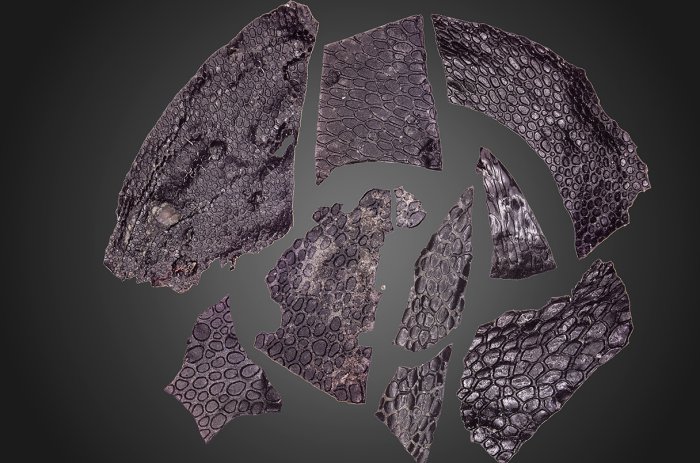Conny Waters – AncientPages.com – Researchers have identified a fragment of the world’s oldest fossilized skin! The fossil, which belongs to a reptile resembling modern crocodiles, is nearly 300 million years old and was collected from the Richards Spur limestone cave system in Oklahoma, USA. This site has preserved many of the oldest examples of early terrestrial animals.

The world’s oldest fossilized reptile skin was found in Richards Spur limestone cave system. Credit: Mooney et all. Current Biology
During the late Paleozoic Era, many species began to emerge from the water to live on land, and though skin fossils are rare, it is occasionally possible to find such fragments in caves. In this case, researchers were lucky because of the cave system’s unique features, which included fine clay sediments that slowed decomposition, oil seepage, and a cave environment that was likely oxygenless.
“Animals would have fallen into this cave system during the early Permian and been buried in very fine clay sediments that delayed the decay process. But the kicker is that this cave system was also an active oil seepage site during the Permian, and interactions between hydrocarbons in petroleum and tar are likely what allowed this skin to be preserved,” first author of the study Ethan Mooney, a paleontology graduate student at the University of Toronto who worked on the project as an undergraduate with paleontologist Robert Reisz at the University of Toronto said.
According to the study published in Current Biology, the 3D fragment of fossilized skin is more than 20 million years older than previously described skin fossils from any animal.
The skin fossil is tiny. It is smaller than a fingernail and as thin as a human hair. Nevertheless, microscopic analysis revealed the fragment was actually an extraordinarily well-preserved bit of reptilian skin.
“We had to be very gentle with them because they are so small and thin,” Tea Maho at the University of Toronto in Canada said.
“We were totally shocked by what we saw because it’s completely unlike anything we would have expected,” Mooney said. “Finding such an old skin fossil is an exceptional opportunity to peer into the past and see what the skin of some of these earliest animals may have looked like.”
Unfortunately, the skin fossil is not ᴀssociated with a skeleton or any other remains, which prevents scientists from identifying what species of animal or body region the skin belonged to. Still, scientists suspect it may have come from an extinct lizard-like species called Captorhinus agouti. How the reptile ended up in the cave is unknown.

Captorhinus aguti. Artistic impression by Didier Descouens, Wikipedia
Skin is very important because it provides the animal with sensitive, flexible, waterproof protection from the harsh outer environment. The fact that this ancient skin resembles the skin of reptiles alive today shows how important these structures are for survival in terrestrial environments. “The epidermis was a critical feature for vertebrate survival on land,” Mooney explained.
The research team suggests this skin retrieved from the Oklahoma cave may represent the ancestral skin structure for terrestrial vertebrates in early amniotes that allowed for the eventual evolution of bird feathers and mammalian hair follicles.
Mooney emphasizes that the skin fragment provides scientists with an exceptional opportunity to look into the first chapter of higher vertebrate evolution.
The skin was collected by lifelong paleontology enthusiasts Bill and Julie May.
The study was published in the journal Current Biology
Written by Conny Waters – AncientPages.com Staff Writer





